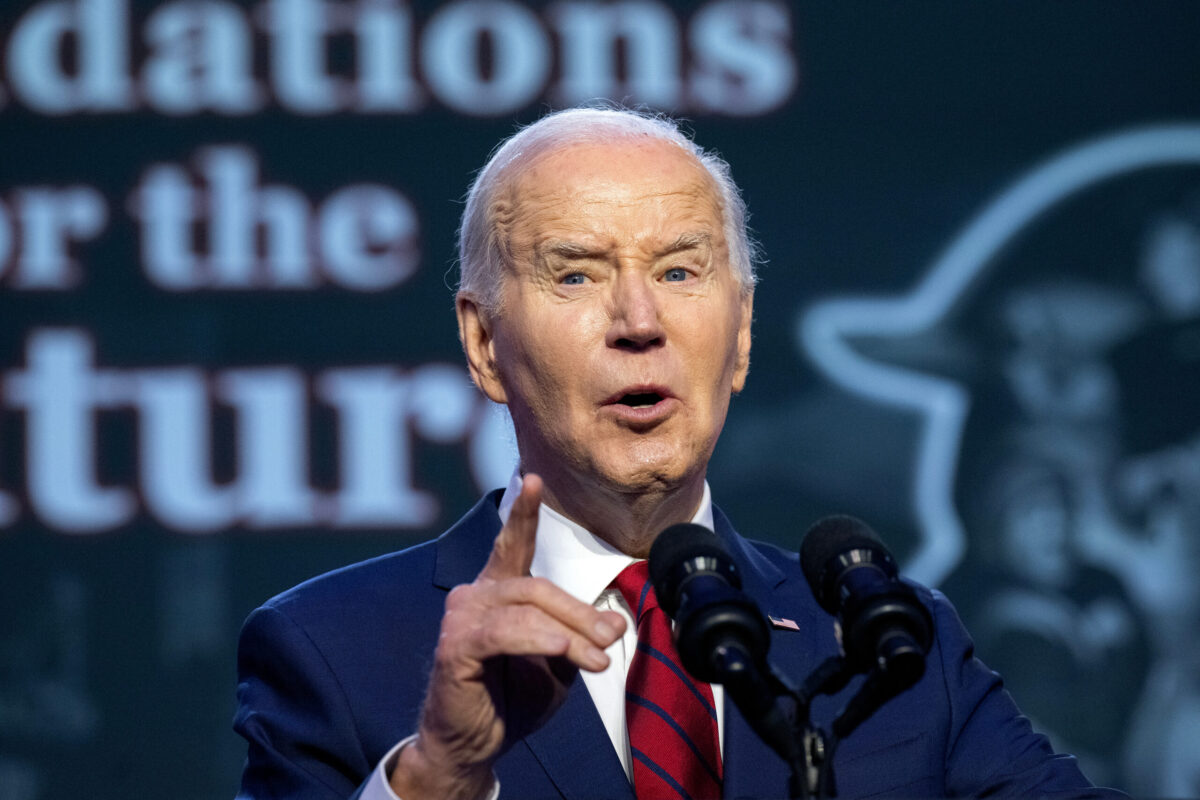A Century Before Trump, Grover Cleveland Was A Bulldog Populist With A Comeback Term
On the heels of the “drain the swamp” populism of the Trump presidency, America once again has an executive branch that gleefully builds bureaucratic excess, with supersizing the IRS among the “victories” of the Biden administration. That bureaucratic-versus-populist tension isn’t just a product of the modern administrative state, though that has certainly exacerbated it. More than 100 years ago, in response to similar overreach and excess, Grover Cleveland brought chopping-block populism into the Oval Office.
In many ways, Cleveland was the ideal American leader. Headstrong, morally courageous, and brutally honest, he served as a bulwark against government overreach and political corruption. But because he wasn’t in office during a war and never signed a piece of glamorous legislation, he is widely considered to be a boring, ineffective president.
In his new book “A Man of Iron: The Turbulent Life and Improbable Presidency of Grover Cleveland,” Troy Senik implores us to reevaluate that bleak assessment. In a breezy 323 pages, he recounts the development of Cleveland’s unlikely career as he went from friendly local attorney to one of America’s most popular chief executives.
De Facto Populist
Cleveland lacked the gravitas and magnetic personality we expect from great leaders. As Senik writes, “in every sense but the literal one, Grover Cleveland was not a larger-than-life figure. He was, in some sense, ordinary.” Nonetheless, in the span of just three years, this ordinary man would go from obscure attorney to mayor of Buffalo, to governor of New York, and finally to president of the United States — the only president to serve two nonconsecutive terms.
Cleveland rose to prominence during the Gilded Age. At this time, bribery, backroom deals, and special favors were the common prerogatives of political and economic elites. Few dared challenge the status quo.
Grover Cleveland was one of those few. As Senik explains, Cleveland believed in the basic tenets of classical liberalism: constitutionalism, fiscal responsibility, and economic freedom. These ideals put him at odds with the establishment of his day and, in Senik’s incisive phrasing, made Cleveland a “de facto populist.” Cleveland stood up for the people, and the people loved him for it.
Senik characterizes Cleveland as having had a warm and affable personality. But when it came to guarding the people’s money, he was a bulldog. A career attorney, Cleveland came to see the taxpayers as his clients. And he wasn’t going to let anyone rip them off.
After a year as mayor of Buffalo, Cleveland was elected governor of New York in 1882. “Let me rise or fall, I am going to work for the interests of the people of the state, regardless of party or anything else,” he declared. To that end, Cleveland performed his executive duties as scrupulously as he could, often coming into the office early and working until midnight. He used his veto power freely, rejecting bills that he believed were wasteful or otherwise inimical to the public interest. He would do the same as president.
Chief Magistrate
Cleveland’s mundane life took an unlikely turn after he ran for mayor in 1880. At that time, his career picked him up like a tornado, and — just three years later — the whirlwind deposited him in the Oval Office. From his inauguration in 1885, Cleveland’s presidency was quite different from that of other modern presidents.
Cleveland didn’t take office with delusions of grandeur. He made no wild assurances of a nationwide transformation or policy panaceas. His promise was a simple one: under his direction, the federal government would fulfill its constitutional obligations — nothing more and nothing less.
Woodrow Wilson, who was in many ways the anti-Cleveland, said Cleveland was “the sort of president the makers of the Constitution had vaguely in mind … exercising his powers like a chief magistrate rather than like a party leader.”
One of the biggest issues facing Cleveland’s administration was the tariff. Republicans had long advocated for high tariff rates in order to protect American manufacturing. Having controlled the federal government since the Civil War (no Democrat had occupied the White House since 1861) they were able to set tariffs as high as they and corporate lobbyists wanted.
Cleveland, meanwhile, argued that the Constitution only authorized the government to set tariffs high enough to cover the government’s expenditures. When he took office, the government was running a budget surplus, leading him to conclude that it was unfairly overtaxing its citizens. As Senik writes, “in contrast to how the issue would often be framed in future generations, Cleveland came to the conclusion that lowering tariffs was the true populist position.” With the righteous energy that characterized his political career, Cleveland began a crusade for tariff reform that continued through both of his presidential terms. Though he never succeeded in passing the sweeping rate reductions he sought, he didn’t stop fighting as long as he was in office.
A Multifaceted Life
Cleveland was all business, all the time. But his private life was no less interesting than his public life. Senik provides the reader with a thorough account of Cleveland’s sex scandal, his marriage to his best friend’s daughter, and a clandestine cancer surgery that nearly claimed his life.
Cleveland lived a multifaceted life. But as Senik argues in “A Man of Iron,” it was his public character, not his personal life, that mattered most to the American people. The winner of the popular vote in three consecutive presidential elections, Cleveland proved that one does not need to pander in order to win elections. Voters will reward politicians who prove their integrity by adhering to their constitutional duties and treating tax dollars as a public trust, rather than as a bottomless pit.
With eloquent prose and engaging historical analysis, Senik’s biography elevates Cleveland’s overlooked career and makes it relevant to contemporary readers.
" Conservative News Daily does not always share or support the views and opinions expressed here; they are just those of the writer."






Unlock commenting by joining the Federalist Community.
Subscribe